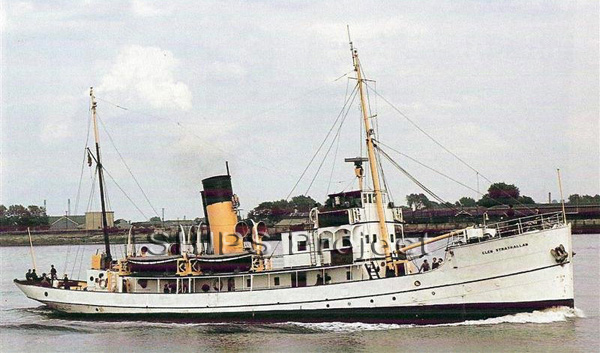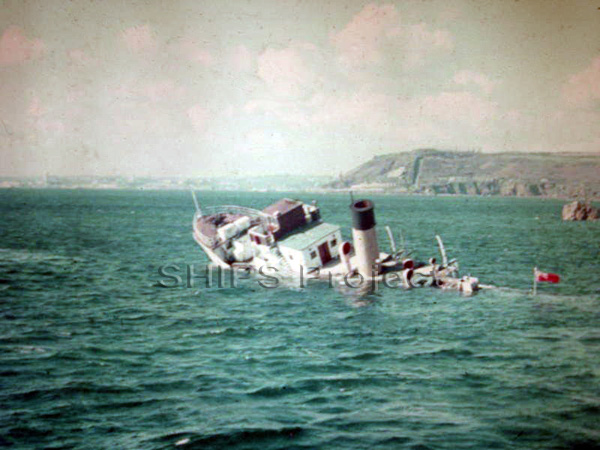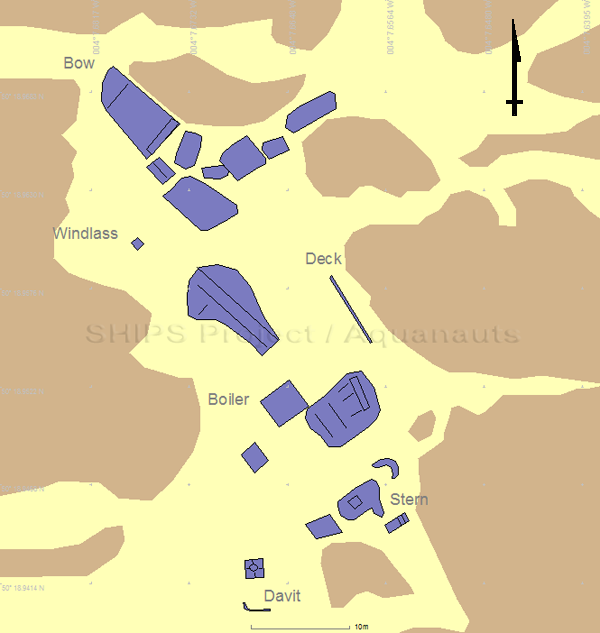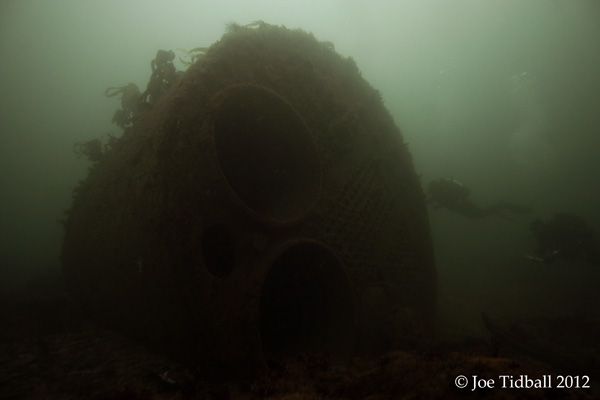Glen Strathallan
In 1928, Cochrane and Sons of Selby, Yorkshire received a contract to build a 150-foot long, 24-foot beam steam trawler of 690-tons displacement as yard number 1020, ID No. 145305, registered as GW 15. The screw-propelled vessel was driven by a triple expansion steam engine and was capable of a speed of ten knots. Prior to the completion of construction, however, the firm that had ordered the Glen Strathallan went bankrupt. Fortunately for Cochrane and Sons, millionaire Colby Cubbin purchased the unfinished vessel for £30,000 and had it converted into a pleasure yacht.
Upon the outbreak of World War II in 1939, Cubbin loaned the Glen Strathallan to the Royal Navy who fitted her with a 12 pdr gun so she could be used as an anti-submarine yacht with pennant FY010. The Glen Strathallan performed this service for four years and was returned to Cubbin when the war ended in 1945. Cubbin used her to travel between the Isle of Man and Scotland, and when he died he requested that the vessel be used as a sea training ship until the end of its useful life, at which time it was to be sunk in the English Channel. The Merchant Navy used the vessel as a training ship from 1955 until the cost of running it became prohibitive and they agreed to sink the vessel in April of 1970.
Though the trustees intended to sink the vessel in the Hurd Deep in the English Channel, an appeal from Plymouth Ocean Projects of Fort Bovisand resulted in the Glen Strathallan being sunk about 200 yards from the Shagstone at Fort Bovisand to be used as a diving school. After the engine was removed for display at the Science Museum in London, the Glen Strathallan was taken out to the Shagstone on the 27th of April; the seacocks were opened and vessel sank to the bottom. At the time she was the first and only ship in Britain to be sunk especially for divers to study as an artificial reef, pre-dating the sinking of HMS Scylla by 34 years.
Unfortunately, the chosen resting spot for the Glen Strathallan was too shallow and too near the eastern entrance to Plymouth Sound and the vessel became a hazard to passing ships. After a year of debating who would pay for a marker buoy, Fort Bovisand was required to disperse the wreckage in order to improve navigation.
The name of this ship is often misspelled 'Glen Strathallen' or 'Glen Strath Allen'.
This wreck has been adopted by Aquanauts Dive Centre as part of the Nautical Archaeology Society Adopt-a-wreck program.
Diving the Glen Strathallan
After scuttling in April, her bows were to the north-west and the upper works of the ship were only 4ft below the surface at low tide, but by October she had rolled over onto its side. A survey undertaken in March of the next year showed the wreck to be oriented NNW/SSE.
The ship became a hazard to navigation so was dispersed using explosives. What remains is the single large boiler, part of the bows lying on its starboard side, sections of hull plating in amongst the sand flats, reefs and gullies of the seabed. A plan of the site is shown below.
![]() If you have any more information about this ship then please contact us.
If you have any more information about this ship then please contact us.
Images
The Glen Strathallan afloat |
The ship being scuttled in Plymouth Sound |
Site Plan (SHIPS Project / Aquanauts) |
Boiler (Joe Tidball) |




